Which Tool is Used in Artificial Intelligence (AI) is transforming industries with its innovative capabilities. TensorFlow, developed by Google, is an open-source platform that simplifies the creation of machine learning models. PyTorch, another leading tool, is favored for its flexibility and dynamic computation graph. Keras, which operates on top of TensorFlow, provides a user-friendly interface for neural network development.
These tools empower developers to build, train, and deploy AI models efficiently. Their widespread adoption and robust community support make them indispensable in the AI toolkit. Understanding these tools is crucial for anyone looking to dive into the field of AI.
Introduction To Ai Tools
Artificial Intelligence (AI) is transforming our world. To create AI systems, AI tools are crucial. These tools help developers build smart applications. They simplify complex tasks and make AI development faster.
Importance Of Tools In Ai
AI tools play a vital role in the AI ecosystem. They provide the following benefits:
- Speed up the development process
- Improve accuracy and efficiency
- Enable handling of large datasets
- Facilitate model training and testing
Without these tools, creating AI models would be very difficult. AI tools make it easier for developers to bring their ideas to life.
Evolution Of Ai Tools
AI tools have evolved significantly over time. Let’s look at their journey:
| Era | Key Developments |
|---|---|
| 1950s-1960s | Basic algorithms and early computers |
| 1970s-1980s | Introduction of expert systems |
| 1990s | Advent of machine learning |
| 2000s | Rise of deep learning frameworks |
| 2010s-Present | Advanced tools like TensorFlow and PyTorch |
Today, we have powerful AI tools that can handle complex tasks. These tools continue to evolve, making AI more accessible and efficient.
Tensorflow
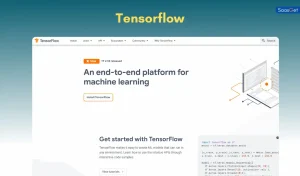
TensorFlow is a popular open-source library for machine learning and artificial intelligence. Developed by the Google Brain team, it offers comprehensive tools for creating AI models. TensorFlow supports various tasks, from neural networks to natural language processing.
Key Features
TensorFlow offers a range of features that simplify AI development:
- Flexibility: Allows easy deployment on different platforms like CPUs, GPUs, and TPUs.
- Scalability: Scales from mobile devices to large-scale distributed systems.
- Comprehensive Ecosystem: Includes TensorFlow Lite for mobile, TensorFlow.js for web, and TensorFlow Extended (TFX) for production pipelines.
- Visualization: TensorBoard provides visualization tools for better model understanding.
- Community Support: A large community offers extensive tutorials and resources.
Use Cases
TensorFlow is versatile and used in many AI applications:
- Image Recognition: Used for identifying objects and patterns in images.
- Natural Language Processing (NLP): Powers chatbots and language translation services.
- Recommendation Systems: Helps in suggesting products or content based on user behavior.
- Time Series Analysis: Utilized for predicting stock prices and weather forecasting.
- Robotics: Facilitates the creation of intelligent robots and automation.
TensorFlow’s flexibility and robust features make it a go-to tool for many AI projects.
Pytorch

PyTorch is a popular open-source machine learning framework. It is widely used in the field of Artificial Intelligence (AI). PyTorch provides a flexible and efficient way to build and train deep learning models.
Advantages
PyTorch offers several key advantages:
- Ease of Use: PyTorch has an intuitive interface.
- Dynamic Computation Graph: The graph is built on-the-fly, making debugging easier.
- Strong Community Support: There is a large, active community for support.
- Integration with Python: It integrates seamlessly with Python libraries.
- Versatility: Suitable for research and production.
Industry Applications
PyTorch is used in various industries:
| Industry | Application |
|---|---|
| Healthcare | Medical image analysis and diagnostics |
| Finance | Algorithmic trading and fraud detection |
| Retail | Recommendation systems and inventory management |
| Automotive | Autonomous driving and predictive maintenance |
| Entertainment | Content recommendation and customer sentiment analysis |
Keras
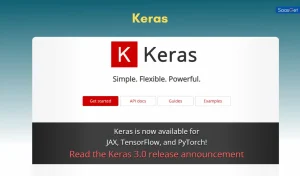
Keras is a powerful tool in artificial intelligence. It is an open-source software library. It provides a Python interface for artificial neural networks. Keras acts as an interface for the TensorFlow library. It is known for its ease of use and flexibility. Let’s dive deeper into its features.
Ease Of Use
Keras is designed with a focus on user-friendliness. It is simple to learn and easy to use. The library uses minimal code for creating deep learning models. This makes it accessible for beginners. Here are some of its user-friendly features:
- Simple Syntax: Keras has an intuitive and easy syntax.
- Modular: It allows for easy combination of neural network layers.
- Extensive Documentation: Keras offers detailed guides and tutorials.
- Community Support: A large community is available for help.
These features make Keras a preferred choice for many developers. It enables quick prototyping and testing of models. This speeds up the development process significantly.
Integration With Tensorflow
Keras integrates seamlessly with TensorFlow. TensorFlow is a robust framework for machine learning. This integration brings several benefits:
- Access to TensorFlow Features: Utilize the full power of TensorFlow.
- Scalability: Keras models can scale with TensorFlow’s capabilities.
- Performance Optimization: Benefit from TensorFlow’s optimization tools.
- Flexibility: Combine Keras simplicity with TensorFlow’s flexibility.
This integration ensures that Keras can handle complex tasks. It leverages TensorFlow for better performance. Developers can enjoy the ease of Keras and the power of TensorFlow.
Scikit-learn
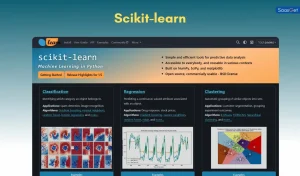
Scikit-Learn is a popular tool for artificial intelligence. It is a free software machine learning library for Python programming. This tool is widely used by data scientists and machine learning engineers. Scikit-Learn provides simple and efficient tools for data analysis and modeling.
Best For Machine Learning
Scikit-Learn is best known for its machine learning capabilities. It offers a wide range of tools to build machine learning models. The library is built on NumPy, SciPy, and matplotlib, making it powerful and versatile.
- User-friendly: Easy to use and understand.
- Versatile: Supports various machine learning tasks.
- Efficient: Offers optimized performance for large datasets.
Popular Algorithms
Scikit-Learn includes many popular machine learning algorithms. These algorithms cover classification, regression, clustering, and more. Below is a table with some of the key algorithms available in Scikit-Learn:
| Algorithm | Type |
|---|---|
| Linear Regression | Regression |
| Logistic Regression | Classification |
| Decision Trees | Classification/Regression |
| K-Means Clustering | Clustering |
With Scikit-Learn, you can implement these algorithms easily. The library simplifies the process of training, testing, and validating models.
Opencv
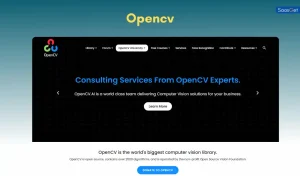
OpenCV, or Open Source Computer Vision Library, is a powerful tool in the field of Artificial Intelligence. It provides thousands of algorithms for various image processing tasks. OpenCV is widely used for developing real-time computer vision applications and is compatible with many programming languages like Python, C++, and Java.
Computer Vision Capabilities
OpenCV offers a range of computer vision capabilities. These include image processing, object detection, and face recognition. It can also be used for camera calibration and stereo vision. Here are some key capabilities:
- Image Processing: Filtering, edge detection, and image transformation.
- Object Detection: Identifying objects in images or videos.
- Face Recognition: Detecting and identifying faces.
- Camera Calibration: Adjusting camera settings for accurate measurements.
- Stereo Vision: Creating 3D images from two 2D images.
Real-world Examples
OpenCV is used in various real-world applications. Here are some examples:
| Application | Description |
|---|---|
| Autonomous Vehicles | OpenCV helps in lane detection and obstacle recognition. |
| Medical Imaging | Used for analyzing medical scans and detecting anomalies. |
| Security Systems | Implemented in facial recognition and surveillance systems. |
| Robotics | Assists in object tracking and navigation. |
OpenCV’s versatility makes it a popular choice for many AI projects. Its extensive library and ease of use are major advantages. Whether you are working on a simple project or an advanced application, OpenCV has the tools you need.
H2o.ai

H2O.ai is a powerful AI tool used by businesses. It helps in making data-driven decisions. The tool offers an easy-to-use interface and advanced capabilities.
Ai For Business
Businesses use H2O.ai to enhance their operations. It helps in analyzing large datasets. This tool provides insights that lead to better decision-making.
Key benefits of using H2O.ai in business:
- Improves customer experience
- Optimizes business processes
- Reduces operational costs
- Enhances product development
Automated Machine Learning
H2O.ai excels in Automated Machine Learning (AutoML). It automates the end-to-end process of applying machine learning. This saves time and resources.
Features of H2O.ai’s AutoML:
- Data preprocessing
- Model training
- Model validation
- Model deployment
With H2O.ai, even non-experts can build robust AI models. This democratizes AI and makes it accessible to everyone.
Ibm Watson
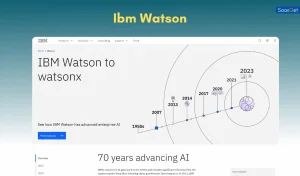
IBM Watson is a powerful tool in the field of Artificial Intelligence (AI). It uses advanced machine learning and natural language processing. It helps businesses make smarter decisions. IBM Watson offers a range of AI services and enterprise solutions.
Ai Services
IBM Watson provides various AI services for businesses:
- Natural Language Understanding: Analyze text to extract metadata like keywords, categories, and concepts.
- Speech to Text: Convert audio and voice into written text for analysis.
- Text to Speech: Transform written text into natural sounding audio.
- Visual Recognition: Identify objects, faces, and scenes in images and videos.
- Language Translator: Translate text from one language to another seamlessly.
Enterprise Solutions
IBM Watson offers robust enterprise solutions:
- Watson Assistant: Build conversational interfaces into any application or device.
- Watson Discovery: Find hidden patterns in your data to make informed decisions.
- Watson Knowledge Studio: Train custom machine learning models to understand your industry-specific language.
- Watson Studio: Accelerate AI development with tools for data scientists, application developers, and subject matter experts.
- Watson Machine Learning: Deploy machine learning models for real-time predictions and analysis.
| AI Service | Description |
|---|---|
| Natural Language Understanding | Analyze and understand text data. |
| Speech to Text | Convert speech into written text. |
| Text to Speech | Generate spoken audio from text. |
| Visual Recognition | Identify elements in images and videos. |
| Language Translator | Translate text between languages. |
Microsoft Azure Ai

Microsoft Azure AI is a powerful suite of AI services. It helps developers build intelligent applications. With Azure AI, you can integrate AI capabilities into your apps. It’s a great choice for businesses of all sizes.
Cloud-based Ai
Azure AI offers cloud-based AI services. This means no need for local infrastructure. You can access AI tools from anywhere. It’s flexible and convenient. The cloud-based model supports collaboration. Teams can work together easily.
Azure AI includes various services:
- Machine Learning
- Text Analytics
- Computer Vision
- Speech Recognition
Each service is accessible through the cloud. This allows for quick deployment and easy updates.
Scalability
Scalability is a key feature of Microsoft Azure AI. It can grow with your business needs. Start small, then expand as required. Azure AI handles increased demand effortlessly.
Advantages of scalability:
- Cost Efficiency: Pay only for what you use.
- Performance: Maintain high performance at any scale.
- Flexibility: Adjust resources as needed.
Scalability ensures your AI applications remain effective and efficient.
| Feature | Benefit |
|---|---|
| Cloud-Based | Access AI tools from anywhere |
| Scalability | Grow with your business needs |
| Cost Efficiency | Pay only for what you use |
Microsoft Azure AI offers robust, scalable, and cloud-based solutions. Ideal for developing intelligent applications.
Google Ai Platform
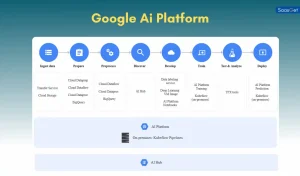
The Google AI Platform is a suite of tools. It helps developers build, deploy, and manage machine learning models. It offers a range of services. These services make AI accessible and scalable.
Ai And Machine Learning
Google AI Platform provides resources for AI and machine learning. Developers can train and test models. They can use pre-trained models or create their own. The platform supports TensorFlow, Keras, and other frameworks.
It also offers Jupyter Notebooks. These notebooks are ideal for experimenting with data. You can visualize and analyze data interactively.
Tools And Apis
The platform offers various tools and APIs. These include:
- AutoML: Helps create custom models without deep knowledge.
- TensorFlow: An open-source library for machine learning.
- BigQuery ML: Allows SQL queries to create ML models.
- AI Hub: Provides a repository of AI components and pipelines.
| Tool | Description |
|---|---|
| AutoML | Automates the creation of custom machine learning models. |
| TensorFlow | Library for numerical computation and machine learning. |
| BigQuery ML | Enables SQL-based machine learning model creation. |
| AI Hub | Repository for AI components and pipelines. |
Frequently Asked Questions
What Is The Best Ai Tool?
TensorFlow is widely considered one of the best AI tools.
Which Ai Tool Is Most Popular?
TensorFlow is the most popular AI tool.
What Tool Is Used For Ai Coding?
Python is a common coding tool for AI.
Which Ai Tool Is Best For Beginners?
Google Colab is great for AI beginners.
What Tool Is Used For Ai Models?
Keras is often used for building AI models.
Which Ai Tool Is Open-source?
TensorFlow is a popular open-source AI tool.
What Tool Is Used For Ai Research?
PyTorch is frequently used in AI research.
Conclusion
Choosing the right AI tool is essential for your projects. Evaluate your needs and consider the tools mentioned. Each offers unique features. Stay updated with the latest advancements. Investing in the right AI tool can significantly boost your productivity. Embrace AI technology to enhance your business processes and achieve optimal results.


